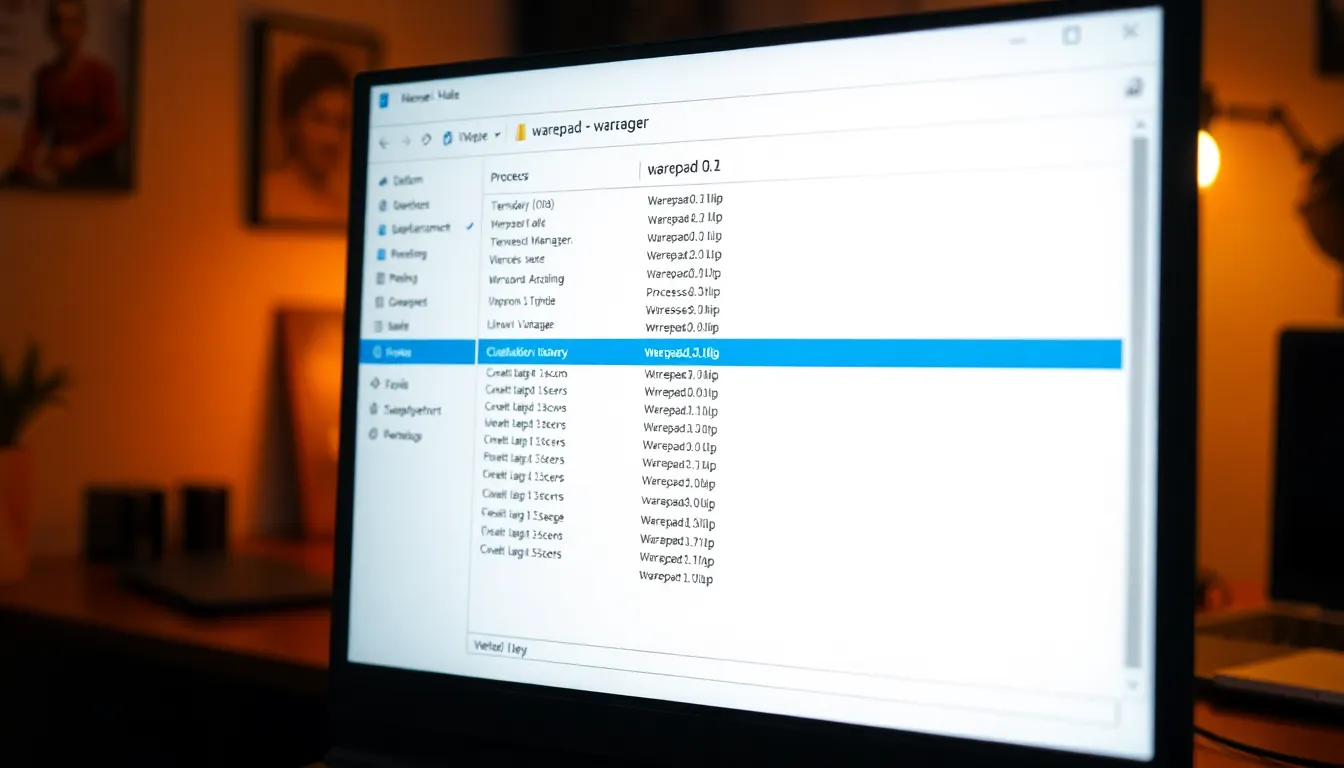Table of Contents
ToggleStaring at your screen, you might be wondering why that pesky warepad0.2 just won’t budge. It’s like an unwanted guest who’s overstayed their welcome, munching on your bandwidth and hogging your PC’s resources. If only it had the courtesy to knock before moving in!
Many users find themselves in this frustrating predicament, grappling with stubborn software that refuses to be uninstalled. Whether it’s a sneaky browser extension or a rogue application, understanding why it clings to your system is key. Spoiler alert: it’s not just being clingy; it’s often a matter of permissions, dependencies, or simply a case of bad coding.
Understanding Warepad0.2
Warepad0.2 proves difficult to remove for several reasons. Software developers sometimes design applications with interdependencies on system components. Such dependencies complicate the uninstallation process, as removing one element might affect others.
Permissions play a crucial role in the removal difficulty. Certain programs require administrative rights for modifications. If a user lacks these rights, the system restricts uninstallation attempts.
Inadequate coding practices contribute significantly to warepad0.2’s stubbornness. Poorly designed installers might not include proper uninstallation scripts. Consequently, users face a challenge when attempting to remove the software.
Some users discover that malware masks itself as legitimate software. In such scenarios, standard uninstallation methods may not work. Tools employed for removal often require specialized software to eliminate deeply embedded malware.
Most software applications create registry entries during installation. These entries link the application to operating system functions, creating roadblocks during uninstallation. Thus, remnants may remain, leading to ongoing issues even after attempting to remove warepad0.2.
Understanding these challenges can help in troubleshooting the removal process. Users might resolve issues by utilizing advanced uninstallation tools designed for stubborn software. In some cases, manual removal steps can aid in overcoming the hurdles encountered with warepad0.2.
Effective management of installed applications includes regular monitoring for unwanted software. By addressing potential issues early, users reduce the chances of encountering stubborn programs in the future.
Common Reasons for Inability to Remove Software


Users often struggle with uninstallation processes due to specific challenges that prevent software removal. Understanding these common reasons can clarify the situation regarding programs like warepad0.2.
Locked Files and Processes
Locked files can hinder uninstallation attempts. When a program is running, active processes may prevent necessary files from being deleted. Users should check the Task Manager to identify any processes associated with warepad0.2 still running. Terminating these processes often enables successful removal of the software. Tools like Process Explorer can help provide a deeper insight into active processes. Closed applications and restarted systems may resolve temporary locks on files, allowing the uninstallation to proceed.
Insufficient Permissions
Insufficient permissions often complicate the removal of software. Some programs, particularly those requiring administrative access for installation, also need these rights for uninstallation. Users must ensure they run the uninstaller with administrative privileges. Right-clicking the uninstaller and selecting “Run as administrator” can help bypass permission-related issues. In some cases, user account settings may prevent software modifications. Adjusting these settings may be necessary to gain the required permissions for removal.
Steps to Attempt Removal
Trying to remove warepad0.2 involves several methods. Each approach can overcome challenges, making uninstallation successful.
Safe Mode Approach
Starting the computer in Safe Mode provides a minimal environment. This mode loads only essential system programs and drivers, reducing interference from third-party applications. Users can access Safe Mode by holding the F8 key during boot-up. Once in Safe Mode, attempts to uninstall warepad0.2 often succeed due to fewer processes running. Next, users need to navigate to the Control Panel and locate the program. Selecting the uninstaller under such conditions increases the chances of complete removal.
Uninstall from Control Panel
Accessing the Control Panel remains a straightforward method. First, users should open the Control Panel from the Start menu. Next, clicking on “Programs and Features” displays a list of installed applications. Users can find warepad0.2 in this list, highlighting the program to start the uninstallation. Running the uninstallation with administrative privileges makes the process more efficient. If any prompts appear requesting confirmation, users should follow these instructions carefully. In instances of failure, users might need third-party uninstallers to deal with stubborn remnants.
Alternative Removal Methods
Users may explore several alternative methods to effectively remove warepad0.2 from their PCs. These options include third-party tools and manual techniques that can address stubborn software issues.
Using Third-Party Uninstaller Tools
Third-party uninstaller tools offer advanced functions that standard uninstall processes lack. Programs such as Revo Uninstaller or IObit Uninstaller scan for leftover files, folders, and registry entries. They eliminate these remnants that often hinder complete removal. By following the on-screen instructions, users can streamline the uninstallation process significantly. Opting for these tools can save time and effort, especially when conventional methods fall short. Additionally, many of these applications provide user-friendly interfaces, making them accessible for non-technical users.
Manual Removal Techniques
Manual removal techniques involve several detailed steps aimed at completely eliminating warepad0.2. First, users can access the Control Panel, navigate to “Programs and Features,” and begin the uninstallation process. If this method proves ineffective, manually deleting installation directories may be necessary. Such directories often reside in “C:Program Files” or “C:Program Files (x86).” After deleting files, users should clean up the Windows Registry, removing any related entries to ensure no remnants remain. Utilizing this comprehensive approach can enhance the chances of successful removal.




